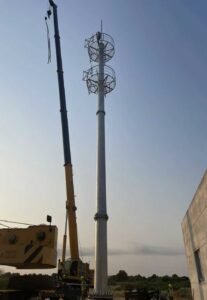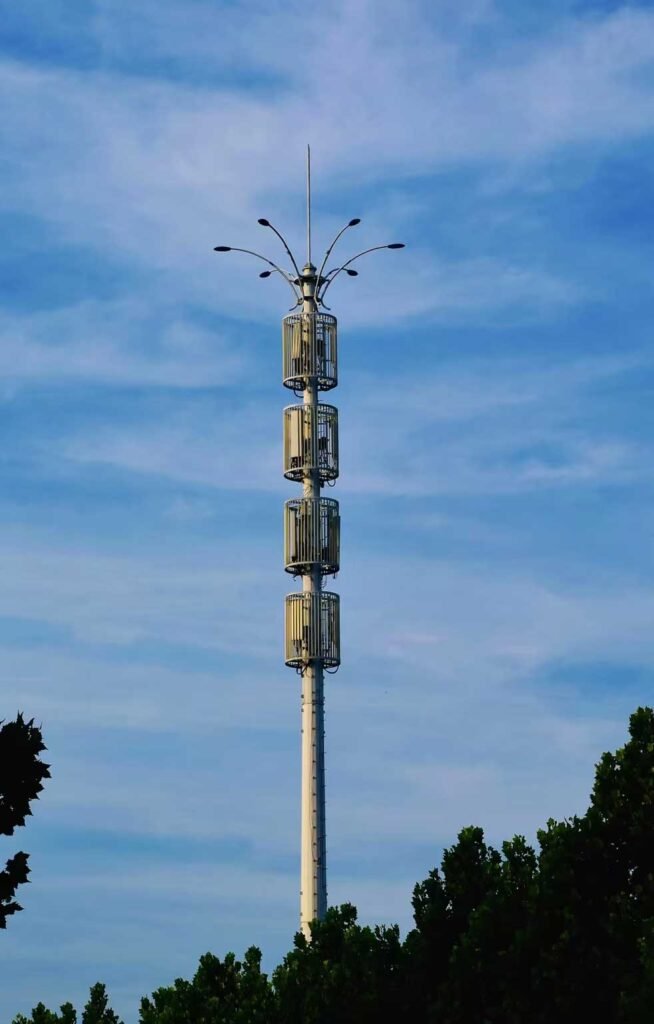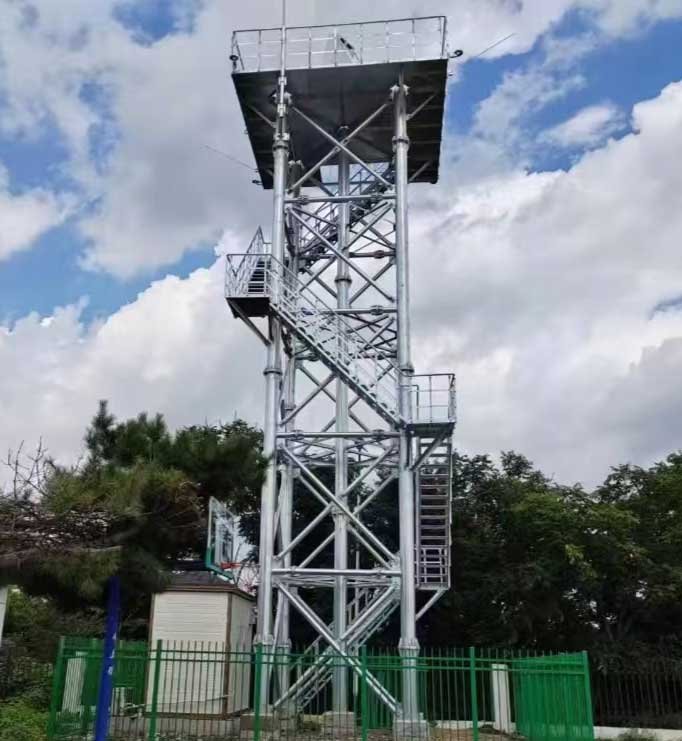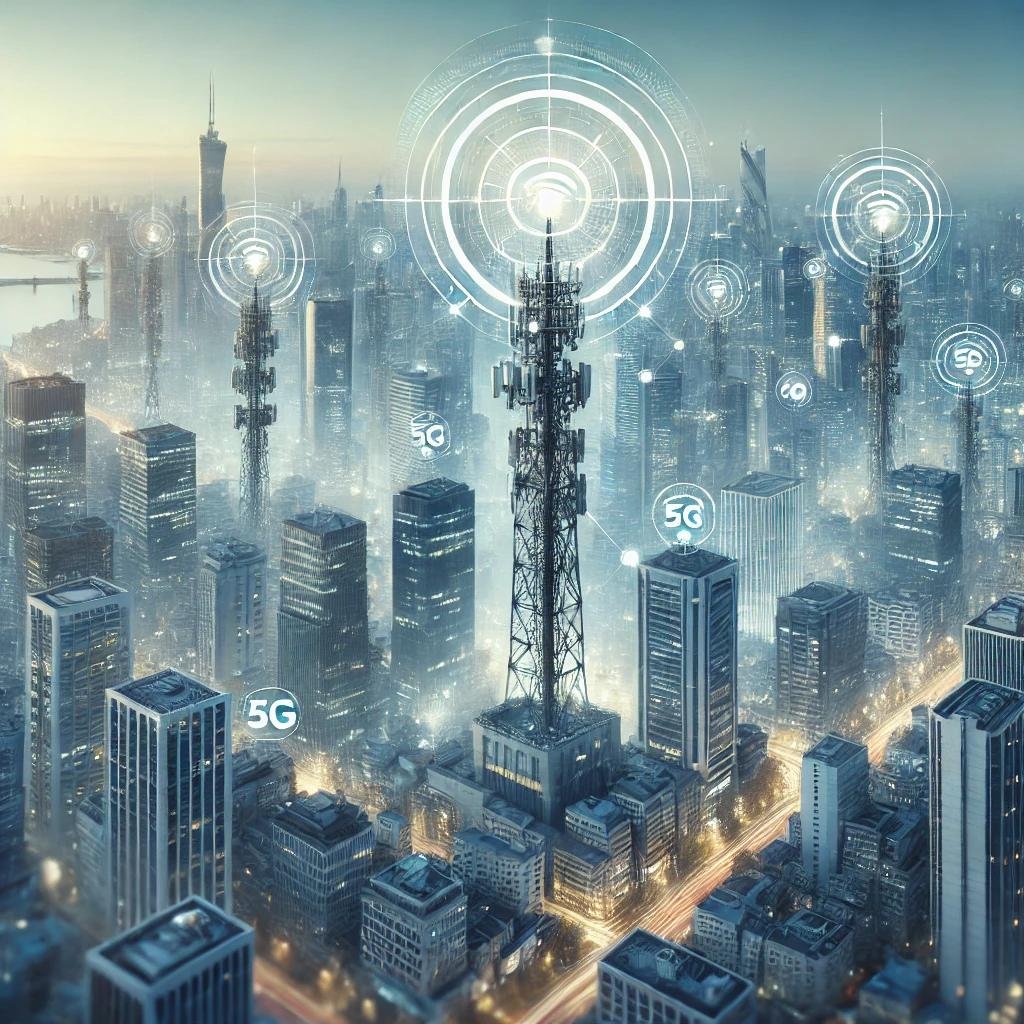Understanding the Role of Cellular Mast in Modern Communication
What Is a Cellular Mast?
A cellular mast is a tall, engineered structure designed to support antennas and other communication equipment that enable wireless mobile communication. These masts serve as the physical backbone of cellular networks—facilitating the transmission and reception of radio frequency (RF) signals between mobile devices (like smartphones) and network base stations.
Commonly referred to as mobile towers, cell towers, or telecom towers, cellular masts are crucial for enabling services across various generations of wireless technology, including 2G (GSM), 3G, 4G LTE, and the most advanced 5Gnetworks.
Typically constructed from steel or reinforced concrete, these masts come in different forms such as monopoles, guyed masts, or lattice towers, depending on their location, load requirements, and network needs. Each mast holds antennas, radio transmitters, receivers, and often microwave dishes, which together establish seamless connectivity between mobile users and the network’s switching centers or core infrastructure.
In urban environments, you may also find smaller-scale masts or rooftop towers integrated into buildings, helping to boost signal coverage in dense areas. In rural or remote areas, larger and taller towers are used to extend mobile services over wide geographical regions.
Without cellular masts, modern wireless communication as we know it—including voice calls, mobile internet, streaming, and IoT connectivity—would not be possible. As technology evolves and data demands grow, especially with the expansion of 5G and smart cities, the role of cellular masts continues to become more critical.
👉 The GSMA defines mobile infrastructure as the “cornerstone of digital inclusion.”
Key Components of a Cellular Mast
A cellular mast is much more than just a tall metal structure—it is a complex hub of integrated components that work together to deliver seamless mobile communication. Understanding these critical elements helps clarify how cellular networks operate and how signal quality is maintained across regions.
1. Antenna Systems
These are the most visible parts of the mast. Antennas are responsible for transmitting and receiving radio frequency (RF) signals between the mast and mobile devices in its coverage area. Depending on the type of technology supported—such as GSM, UMTS, LTE, or 5G NR—the mast may carry multiple types of antennas arranged in sectors to ensure 360-degree coverage. Advanced systems like MIMO (Multiple Input Multiple Output) and beamforming are often used in modern 4G and 5G installations to increase capacity and signal precision.
2. Base Transceiver Station (BTS)
Housed either at the base of the mast or in a nearby equipment shelter, the Base Transceiver Station is the electronic heart of the cell site. It handles modulation, signal encoding, encryption, and handovers between cells. The BTS communicates directly with mobile devices, converting digital data into radio signals and vice versa. It’s typically managed by software and can be remotely monitored and updated.
3. Backhaul Connection
This is the vital link that connects the cellular mast to the core network, enabling communication between users and the internet or voice switch. The backhaul can be established through fiber-optic cables, which offer high bandwidth and low latency, or microwave dishes, which are often used in rural or difficult-to-reach locations. The reliability and speed of the backhaul directly affect overall network performance and user experience.
4. Power Supply System
To ensure 24/7 uptime, every cellular mast is equipped with a robust power system. This includes main power connections, backup batteries, and often diesel generators to maintain functionality during outages. In remote or off-grid areas, solar panels or wind turbines may be deployed as sustainable power sources. Power systems are also designed to support the cooling and climate control of sensitive electronic equipment housed on-site.
See detailed breakdown at Nokia’s mobile network overview.

Types of Cellular Masts
| Tower Type | Description | Typical Use Location |
|---|---|---|
| Self-supporting Tower | Triangular/lattice; stable on its own | Urban, rural |
| Guyed Tower | Supported with guy wires; low cost | Rural/open areas |
| Monopole | Single pole design; compact | Urban rooftops |
| Small Cell | Low-powered, short-range tower | Densely populated areas |
| Rooftop BTS | Mounted on building tops | Cities |
More tower types at American Tower.
5G Towers: A New Era of Connectivity
With the global rollout of 5G networks, cellular masts are undergoing a significant transformation to meet the unprecedented demands of next-generation communication. Unlike their 4G predecessors, 5G towers are engineered to deliver ultra-fast data speeds, extremely low latency, and massive device connectivity—core requirements for smart cities, autonomous vehicles, IoT systems, and immersive technologies like AR/VR.
1. Denser Deployment – Especially Small Cells
One of the most fundamental shifts in 5G infrastructure is the move toward denser network architecture. Because 5G, especially in high-band spectrum, has limited range and poor penetration through obstacles, small cells—compact, low-power base stations—are being deployed in large numbers on streetlights, utility poles, and building facades. This allows carriers to provide consistent high-speed coverage in urban centers, stadiums, shopping malls, and transit hubs. In rural areas, macro towers are still used but are often upgraded to support 5G frequencies.
2. High-Frequency Millimeter Wave (mmWave) Support
5G utilizes a broader spectrum, including millimeter wave bands (24–100 GHz), which offer enormous data capacity but are highly susceptible to physical obstructions such as buildings, trees, and even rain. This necessitates precise alignment of antennas, line-of-sight (LOS) transmission, and the integration of beamforming technologies to focus signals more effectively. As a result, 5G masts must support advanced antenna systems like massive MIMO to handle both high throughput and spatial multiplexing.
3. Low Latency and Ultra-Fast Speeds
The defining feature of 5G is its latency reduction to as low as 1 millisecond and speeds reaching up to 10 Gbps. These capabilities are made possible through improvements not only in the radio access network (RAN) but also in backhaul and edge computing. 5G towers often integrate edge computing nodes, bringing data processing closer to the user and enabling real-time applications such as industrial automation, connected vehicles, and remote surgery.
Overall, 5G towers represent more than a technological upgrade—they mark a shift toward a hyper-connected society. Their deployment strategy and hardware design are tailored to deliver consistent, scalable, and intelligent connectivity solutions for the digital age.
According to Qualcomm’s 5G small cell guide, small cells complement macro towers in urban environments.
Cellular Mast and Signal Coverage
Signal coverage—the area within which a mobile device can reliably send and receive signals—plays a pivotal role in the performance of any wireless communication network. Cellular masts are the backbone of this coverage, and several critical factors determine how effectively a mast can serve its surrounding area:
1. Tower Height and Antenna Positioning
The height of a cellular mast directly affects its coverage radius. Taller towers allow antennas to broadcast signals over longer distances and minimize interference from ground-level obstructions. However, the elevation angle and orientation of antennas are just as important. Sector antennas are often tilted downward (down-tilted) to optimize ground-level signal strength and reduce overlap with adjacent cells. Precise positioning ensures optimal signal propagation and minimizes dead zones.
2. Frequency Bands Used
Different frequency bands behave differently in terms of coverage and penetration.
-
Low-band frequencies (e.g., 700 MHz) travel long distances and penetrate buildings effectively, making them ideal for rural and suburban areas.
-
Mid-band frequencies (1–6 GHz) offer a good balance between speed and coverage.
-
High-band (millimeter wave) frequencies, while supporting ultra-fast speeds, have limited range and weak obstacle penetration, making them suitable only for dense urban deployments with high mast density and minimal obstruction.
The choice of spectrum band heavily influences network planning and mast deployment strategies.
3. Physical Obstructions
Obstacles like tall buildings, thick walls, hills, and trees can attenuate or completely block radio signals. Urban environments are particularly challenging due to the multipath propagation effect, where signals reflect off surfaces and create interference. To address this, cellular masts must be strategically placed and sometimes supplemented by repeaters or small cells to fill in coverage gaps.
4. Mast Density in an Area
The number of masts within a given area—or network density—determines how well signal coverage is distributed and how much traffic each mast must handle. In high-demand areas, such as city centers or stadiums, dense networkswith overlapping coverage are essential to avoid network congestion and ensure stable performance. Conversely, in rural areas, fewer but taller towers may be used to maximize reach with fewer installations.
In essence, optimal signal coverage is a carefully orchestrated outcome of infrastructure planning, technological deployment, and environmental consideration. A well-designed network ensures seamless connectivity, reduced dropped calls, faster data speeds, and a better user experience.
See mobile signal explanation by Ofcom UK.
Deployment Challenges and Regulations
Despite the indispensable role of cellular masts in modern communication, deploying new telecom towers is far from straightforward. Telecom operators and infrastructure providers must navigate a complex web of technical, regulatory, and social challenges before a single mast can be erected.
1. Zoning Laws and Local Opposition (NIMBY Concerns)
One of the most common barriers to deployment is local zoning regulations. These dictate where and how towers can be built, often restricting them in residential or environmentally sensitive areas. Even when legal permission is granted, projects frequently face public resistance, commonly referred to as NIMBY (“Not In My Back Yard”) sentiments.
Local residents may oppose towers due to concerns about:
-
Visual pollution and impact on property values
-
Perceived health risks from electromagnetic fields (EMF)
-
Disruption during construction
Public hearings, community consultations, and compromise designs—such as camouflaged towers or rooftop microcells—are often necessary to secure approval and social acceptance.
2. Environmental Impact Assessments (EIAs)
Many countries require Environmental Impact Assessments before tower installation, especially for masts located near:
-
Protected natural areas
-
Wildlife habitats
-
Culturally significant landmarks
The environmental review process can delay or prevent projects if a mast is deemed harmful to the surrounding ecosystem. Developers must often provide mitigation strategies, such as minimizing ground disturbance or choosing low-impact foundation designs, to comply with environmental standards.
3. Health and Safety Concerns
Public concern about radiation from telecom towers continues to spark debate, despite studies by organizations like the World Health Organization (WHO) and ICNIRP (International Commission on Non-Ionizing Radiation Protection) showing that exposure from base stations is typically well below safety limits.
Nonetheless, regulators enforce strict safety standards on:
-
RF exposure levels
-
Structural stability (especially in earthquake or typhoon-prone zones)
-
Lightning protection
-
Access control to prevent unauthorized entry
Additionally, occupational safety for tower technicians is a priority. This includes fall protection systems, electrical hazard precautions, and periodic maintenance protocols.
In the U.S., tower deployment is guided by FCC tower siting regulations.
Emerging Trends in Cellular Mast Technology
- AI-powered optimization
- Integrated IoT gateways
- Energy-efficient design
- Solar/hybrid power systems
The IEEE’s paper on telecom infrastructure evolution discusses the rise of 6G and intelligent masts.
Conclusion
Cellular masts are more than just steel structures – they are the backbone of today’s hyper-connected world. From enabling signal coverage to supporting the 5G revolution, these towers continue to play a crucial role in global communication. As technology evolves, so will the towers, becoming smarter, greener, and more essential than ever
✅ Call to Action:
📞 Need help planning a 5G-ready infrastructure?
Let our experts help you select the right tower design for your region.
👉 Contact Us Today
9. FAQs
Q1: Is a “cellular mast” the same as a “telecom tower”?
A: Not exactly. All cellular masts are telecom towers, but telecom towers can also include broadcast or microwave-only sites.
Q2: Can one cellular tower support multiple mobile carriers?
A: Yes. Lattice and monopole towers often host antennas for 2–4 carriers simultaneously.
Q3: How often are towers maintained?
A: Most towers undergo bi-annual inspections for structural integrity, power backups, and equipment calibration.
Q4: What role do cellular sites play in disaster recovery?
A: Portable mobile cellular towers (COWs: Cell on Wheels) are deployed during natural disasters to restore emergency communication.



